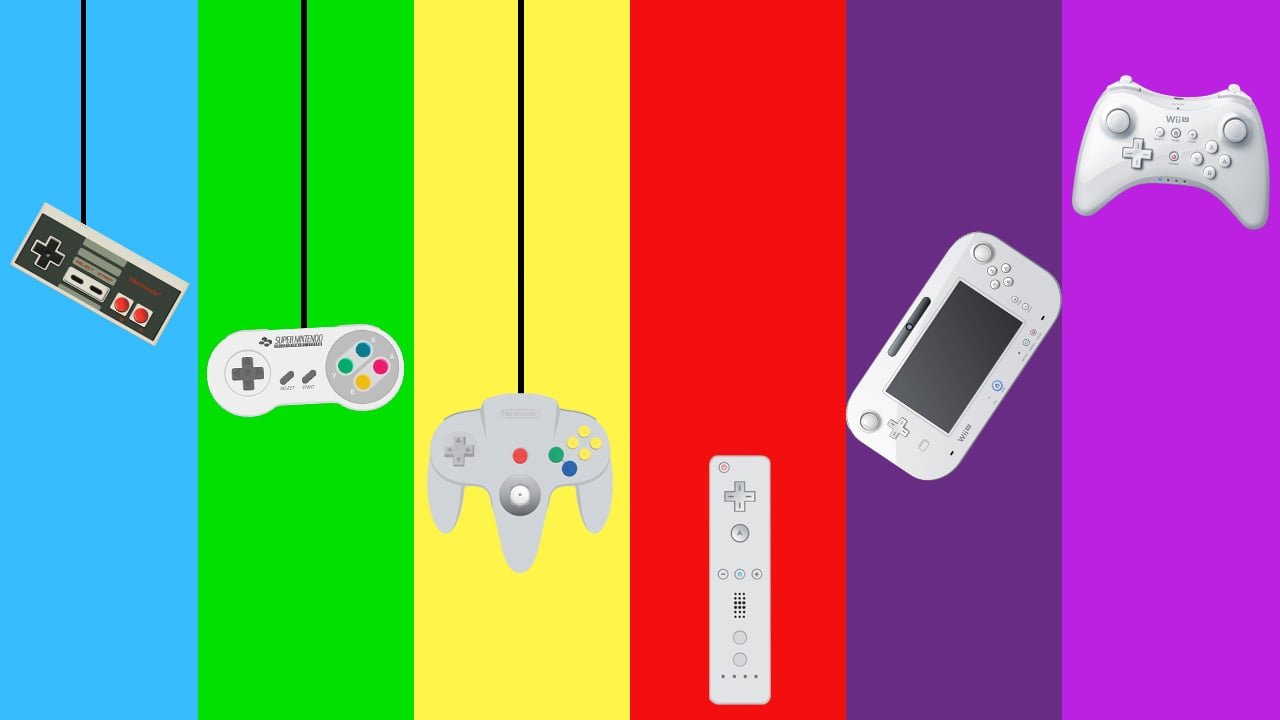It’s been more than 30 years since human hands cradled the first Nintendo controller, mashing the square-shaped A and B buttons of Nintendo’s gold and maroon Family Computer controller, first released in Japan in July 1983. Of the three major gaming console manufacturers, Nintendo is the only one that experimented with and revolutionized gameplay with multiple controller designs and technologies.
Before that first Famicom controller, the console itself acted as the controller as well. Nintendo’s first videogame system was the Color TV Game 6 and came out in 1977 exclusively in Japan. It contained six different versions of a Pong-like table tennis game.
Famicom featured two controllers, both hardwired into the back of the system. Each controller had its own dock on either side of the system where they could rest while not in use. Controller 1 had four buttons, A, B, Start and Select as well as the directional pad. Controller 2 had a volume control and microphone instead of Start and Select.
The classic rectangular grey, black and red NES controller holds a place in many a gamer’s heart. One of the most popular gaming consoles of all time, NES came out in 1985. Unlike Famicom’s controllers, NES controllers could be removed from the system and their shape possessed sharper, boxy edges as opposed to the smoother rounded ones of its Famicom sibling.
Only a couple years after the NES and all its glory was released to the world, many first party accessories and modified controllers were released, including the 1985 NES Zapper which you may remember pointing at your old CRT TV while playing Duck Hunt. But notably, the NES Advantage, which was meant to sit on a flat surface, is one of the more fondly remembered gamepads. The arcade-style joystick and oversized A and B buttons were meant to bring the arcade experience home. And the added adjustable turbo feature, which allowed the player to hold down an action button rather than incessantly tap it, and the slow feature, which paused and unpaused gameplay repeatedly for a slow-motion effect, were introduced on the Advantage.
The NES Max was the first time a Nintendo controller took on the boomerang or “winged” shape. Released in 1988, the Max lies somewhere between the classic NES controller and the Advantage. The NES Max “joypad” held on to the turbo feature, although didn’t offer the ability to adjust it. Another addition was the “cycloid” which replaced the d-pad, an eight directional mix between a joystick and the classic d-pad. The NES Max may have peeked through the cracks towards future game controllers, but never gained much traction as many NES users preferred the simplicity of the classic controller.
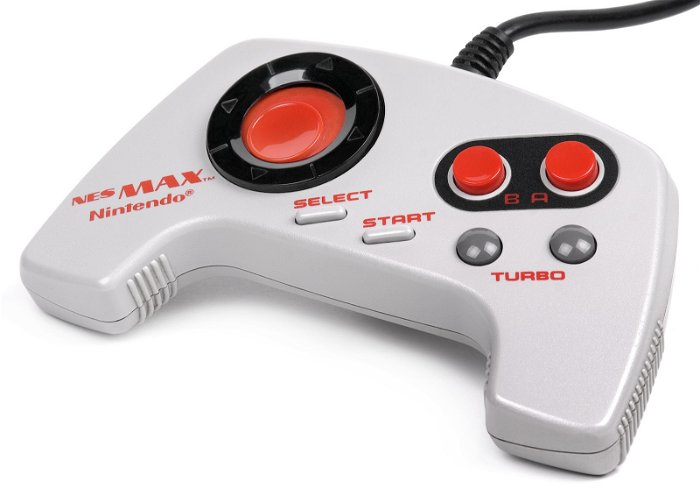
But then came 1991 and the release of the SNES! Things weren’t as simple anymore with the two newcomer face buttons, X and Y, which graced the face of the rounded, although not much more comfortable, SNES controller. This controller also invited your index fingers to partake in gameplay with the introduction of the L and R shoulder buttons. But what may have seemed more complicated quickly became worth it as our chubby plumber friend could suddenly run like the wind and fly across worlds (after absorbing that amazing cape feather).
After a major redesign, the NES was re-released with a top-loading cartridge port and waved goodbye to the thin brick classic controller. The NES-101, or NES 2, came out in 1993 and essentially replicated the design of the SNES controller, without the added XY, LR buttons. This controller was also sometimes known as the “dogbone” or “doggie” controller.

Then things got a bit crazy with the release of the Virtual Boy in 1995. The console was a commercial flop, but was the first time Nintendo needed a control concept for 3D space. The slightly terrifying controller looks most similar to the N64 controller, if you replace the middle analog stick arm with a giant battery pack. One interesting fact is that since the Virtual Boy controller mirrored itself on either side, with a d-pad and two face buttons on either side, left handed players had the option to reverse the control settings.
The shape of the N64 controller was so complex for its time that a computer couldn’t model it. The first mock-up had to be made out of clay, according to a 1995 edition of Nintendo Power magazine. While the standard N64 controller, first released in 1996, was the first time an analog stick allowed for smooth exploration in 3D worlds in Nintendo games (the controller’s design was solidified during Super Mario 64 testing), it’s three-pronged design made it impossible for any player with less than three hands to use every function at once. Although it does bring to light a turning point in Nintendo’s audacity in experimenting with different gamepad designs and paved the way for console controllers to come.
The GameCube controller, released in 2001, brought together aspects from all the previous standard controllers and melded them together quite ingeniously. The rumble-pak add-on from the N64 controller was built-in, it welcomed back the X and Y buttons, turned the view control C buttons into an analog stick, and was designed for two-handed humans!
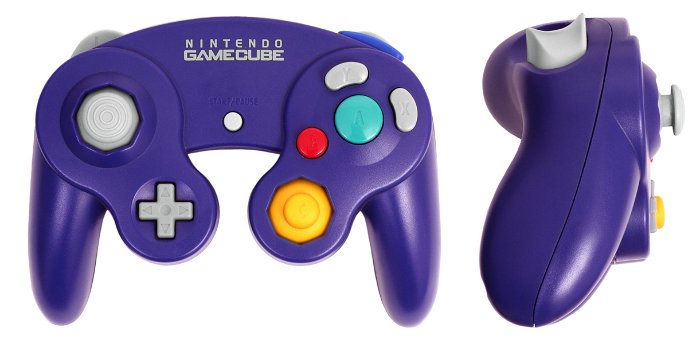
The GC controller would continue to be a well-loved and used gamepad even as Nintendo’s next system, the Wii, came out, which once again showed Nintendo’s daring creativity in controller design and innovation. Although ports for GC controllers were still available at the back of the console, the Nintendo Wii, released in 2006, yet again presented the world with a controller meant to completely change the way we control gameplay: the motion sensing Wii Remote (or Wiimote). Although game-changing, turned sideways it’s clear the Wiimote pays homage to that very first box of an NES controller. With two buttons (although now labelled 1 and 2) positioned horizontally (not diagonally) on the right and the classic d-pad on the left. Memories!

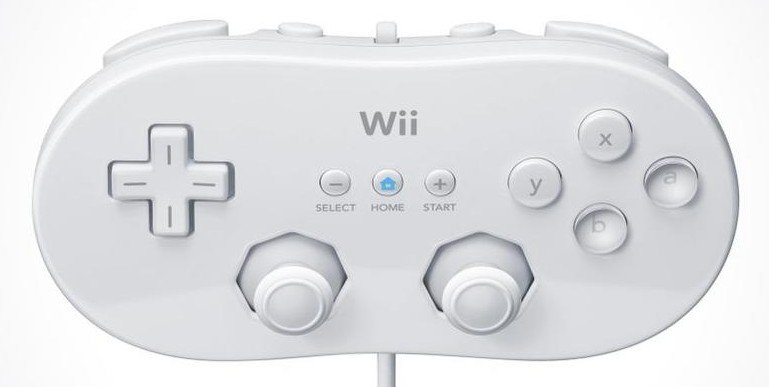
But thumb-centred gameplay couldn’t simply be left behind. You won’t find many Wii owners’ Wiimotes without a nunchuck attached to them. Attachments to the Wiimote such as the Classic Controller, which essentially looks like the GameCube controller’s horribly boring cousin, present nothing particularly new or fascinating, but at least allow NES, SNES and N64 games to be played on the Wii.
The Wii U came out in 2012 and again introduced another brand new controller, the GamePad. Perhaps some question the vagabond perspective Nintendo seems to have with its inability to stick to a controller design that works (settle down already!), but the Wii U Pro Controller, in an attempt to bring back the “hardcore” players Nintendo lost with the Wii, brings with it a design much like that of the PlayStation’s dual shock controller, but more so Xbox One’s controller.

So the Wii U currently supports the Wiimote with all its attachments, the GamePad and the Pro controllers. Nintendo also released an adaptor along with Super Smash Bros for Wii U to make the GameCube controller compatible, but only for that specific game.
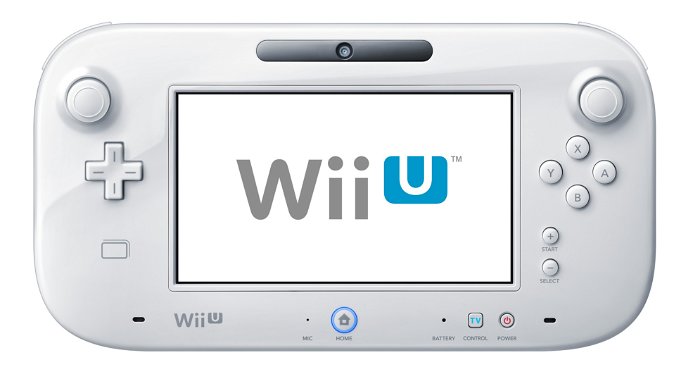
While the Wii U’s primary GamePad controller boasts a built-in touch screen that acts as a companion to gameplay on the TV screen, the Pro controller seems to be communicating to gamers that Nintendo certainly is revolutionizing game control technologies, but recognizes that sometimes it’s best to hold on to your roots.
